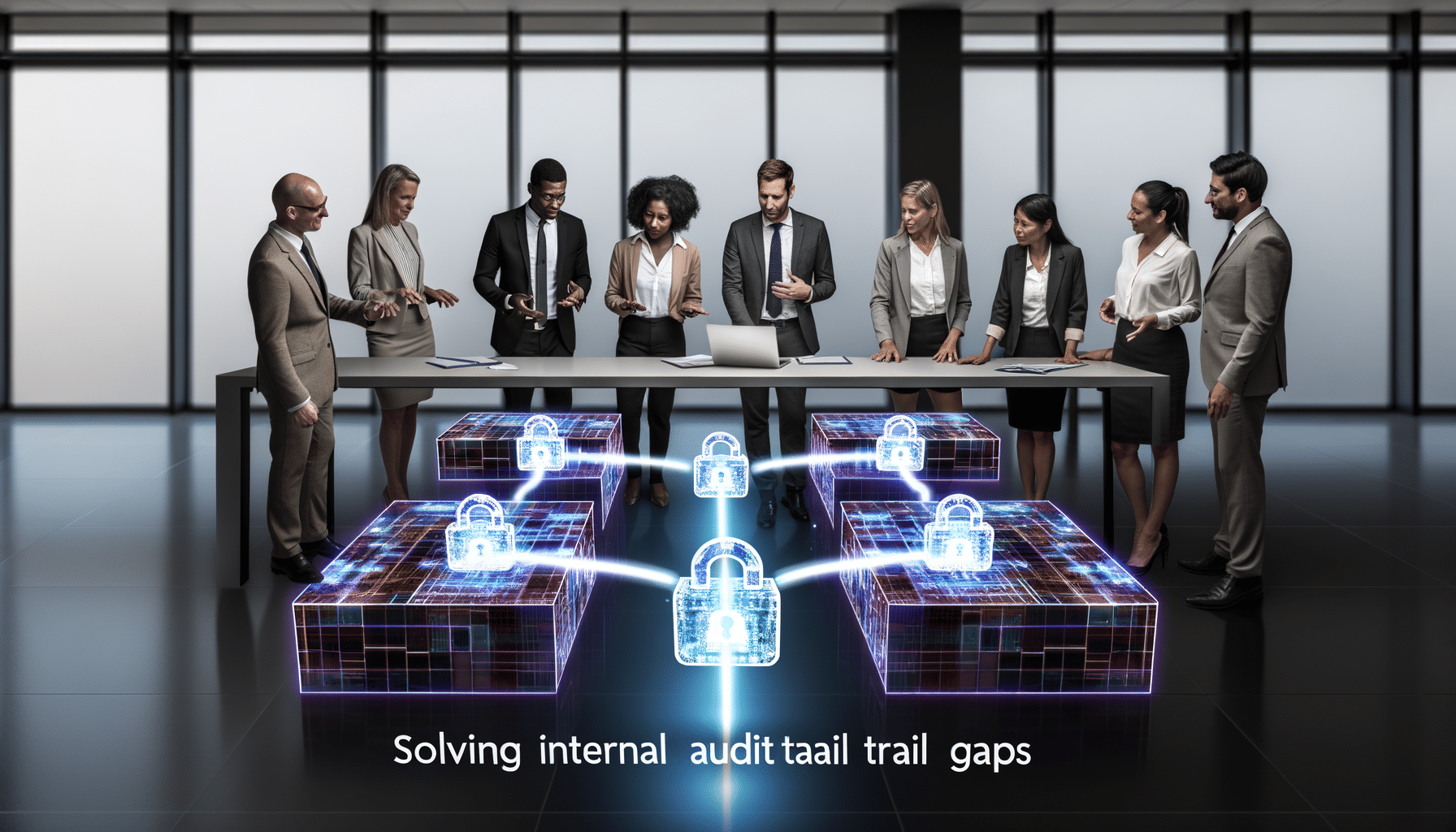- Accuracy Audits
- November 16, 2024
Solving Internal Audit Trail Gaps

Internal audit trail gaps—a challenge that many record-keeping professionals grapple with in their day-to-day operations. Whether you belong to a financial institution, a healthcare provider, or a regulatory agency, ensuring the completeness and accuracy of audit trails is paramount. Unclosed gaps can not only lead to compliance headaches but also threaten the security and integrity of an organization’s entire data ecosystem.
At RecordsKeeper.AI, I have poured over intricately designed systems to leverage technology, especially Blockchain, to address this very issue. Let’s explore how we can plug those audit trail gaps effectively.
Understanding Audit Trail Gaps
An audit trail is simply a chronological record that provides documentary evidence of the sequence of activities that have led to any given operation, procedure, or event. When gaps appear in these trails, it signifies lapses where critical data transactions may not have been documented accurately or at all. This can impact compliance with various regulations like GDPR or HIPAA and risks your organization facing financial or reputational penalties.
Why Do These Gaps Happen?
Gaps in audit trails can occur due to:
- Human Error: Manual record entry or oversight can lead to both inadvertent vices and malpractices.
- Software Limitations: Legacy systems might not offer seamless capturing or retrieval of data actions.
- Process Complexity: High data volumes and complicated transaction layers can make it challenging to maintain audit integrity.
The Power of Blockchain in Securing Audit Trails
As a disruptor in record management, Blockchain is reshaping how we perceive data integrity. This technology ensures that every transaction added to a blockchain is tamper-proof and indelible. How does it tackle audit trail gaps?
Immutability and Transparency
Blockchain records cannot be altered once committed, which means any activity can be audited with certainty that the data is in its original form. Furthermore, the transparent nature of distributed ledgers ensures that all parties involved in a transaction can view and verify data uniformly, leaving no room for discrepancies.
Time Stamps and Traceability
Every transaction on a blockchain ledger comes with a timestamp, which enables chronological tracking without risk of modification. This feature is crucial for reconstructing operational histories in internal audits, effectively resolving potential audit trail gaps.
Bridging the Gaps with RecordsKeeper.AI
RecordsKeeper.AI not only harnesses AI for intelligent record categorization and retrieval but also integrates Blockchain for audit trails you can trust implicitly. Designed from the ground up with compliance and data integrity as our focal points, our platform offers:
- Automated Audit Logs: Say goodbye to human error. With AI, recording every interaction with your data becomes an automated process, ensuring exhaustive audit logs across the board.
- Blockchain Integration: Guarantee each interaction’s integrity with tamper-proof audit trails, reducing fraud risk and increasing confidence during internal audits.
- Regulatory Compliance: As policies become increasingly stringent, our platform adapts to changing compliance landscapes, ensuring systems remain gap-free while meeting industry standards.
Case Study: A Practical Example
Consider a healthcare provider implementing RecordsKeeper.AI to maintain electronic health records (EHRs). Given the sensitivity and compliance obligations related to HIPAA, this organization found audit trail gaps a lingering issue. By deploying blockchain-backed records, it was possible to trace every access or modification of EHRs. This transformed how the provider measured compliance, subsequently reducing audit preparation time by over 30%.
Conclusion
Firm audit trails form the backbone of robust data stewardship. They encapsulate not just compliance and record management but build the foundation of trust in digital transactions. By addressing audit trail gaps with blockchain technology, RecordsKeeper.AI empowers organizations to reinforce their data imperatives. If you’re ready to confront these challenges head-on, explore more of my insights or engage with us directly for a deep dive into transforming your record management system.
As data custodians, it’s up to us to modernize our approaches, making rigorous audit trails the rule, not the exception.
Toshendra Sharma is the visionary founder and CEO of RecordsKeeper.AI, spearheading the fusion of AI and blockchain to redefine enterprise record management. With a groundbreaking approach to solving complex business challenges, Toshendra combines deep expertise in blockchain and artificial intelligence with an acute understanding of enterprise compliance and security needs.
Related Posts

Enhancing Internal Audits with AI
Using AI to streamline and enhance internal audit processes.
- November 16, 2024

Automated Audit Documentation with AI
Simplifying audit processes with AI-driven documentation.
- November 16, 2024
Archives
- January 2025
- December 2024
- November 2024
- October 2024
- September 2024
- August 2024
- July 2024
- June 2024
- May 2024
- April 2024
- March 2024
- February 2024
- January 2024
- December 2023
- November 2023
- October 2023
- September 2023
- August 2023
- July 2023
- June 2023
- May 2023
- April 2023
- March 2023
- February 2023
- January 2023
- December 2022
- November 2022
- October 2022
- September 2022
Want to get more content like this?
Signup to directly get this type of content to your inbox!!
Latest Post
Document Control for Equipment Maintenance
- January 20, 2025
Managing Records for Multiple Clients
- January 19, 2025
Handling Conference Documentation
- January 18, 2025
Setting Up Department Record Reviews
- January 17, 2025





